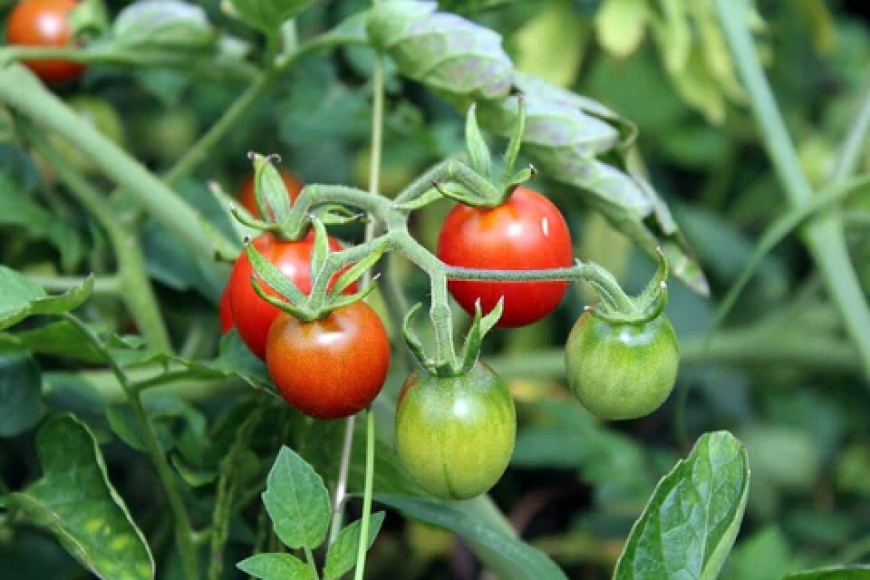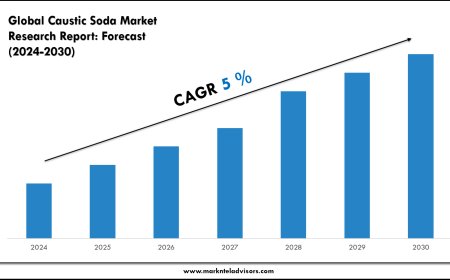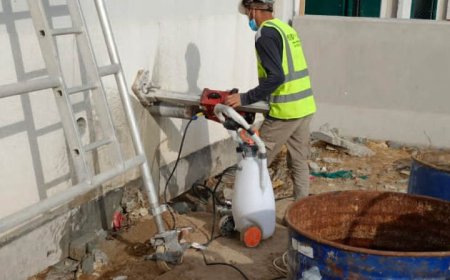Everything About Growing Tomatoes in India the Right Way
Tomato cultivation is one of the most profitable and common ways of vegetable farming in India. It is consumed in nearly every Indian household, so it is a high-value crop all year round.

Tomato cultivation is one of the most profitable and common ways of vegetable farming in India. It is consumed in nearly every Indian household, so it is a high-value crop all year round. If you are a small-scale or large-scale farmer, with the right methods, anyone can get great returns.
This guide will give you all the details that you require to start tomato cultivation.
Benefits of Tomato Farming
Tomatoes grow quickly and can be harvested in a short time, usually within 70 to 90 days. Here are a few reasons why farming this crop is a smart choice:
-
High market demand year-round.
-
Short growing season.
-
It can be grown on small land areas.
-
Suitable for different climates in India.
-
Provides good income with proper care.
8 Key Steps for Tomato Cultivation
Healthy tomatoes develop with proper care at every level, right from soil preparation to the fruiting stage. Below are the main steps that will guide you to a good yield:
Land Preparation
Land preparation begins with ploughing the land 2-3 times to loosen and break the soil. It increases air and water movement. Weeds, stones, and previous crop residues should be removed. Compost or farmyard manure is incorporated while ploughing to increase the fertility of the soil. Lastly, level the ground to allow good movement of water and simple management of the crop.
For doing this process, the Mahindra Yuvo Tech Plus 575 4WD can be used. It comes with a 47 HP engine and a 4WD system that offers good traction, making it easy to drive on uneven or muddy land. Further, the 2000 kg lifting capacity assists in moving heavy equipment. Moreover, the Mahindra Yuvo Tech Plus 575 4WD price varies between Rs. 9.14 lakh and Rs. 9.68 lakh.
Sowing and Planting
Tomato sowing starts with choosing healthy seeds and preparing a nursery bed. Plant the seeds 1-2 cm deep in watered soil. Water them regularly to facilitate the growth of the seeds. In 25-30 days, the seedlings reach a height of 4-6 inches and become ready for transplanting into the primary field.
For transplanting, handle the seedlings gently in well-prepared soil. Space is about 2 feet between plants and 3 feet between rows. Transplant and water the plants to settle them. Give the young plants protection from pests and weeds to promote healthy growth and enhance tomato production.
Irrigation
Growth is very important with irrigation, particularly during flowering and fruiting. Save water and keep leaves dry by using the drip or furrow method to avoid disease. Water 4-5 days a week during the initial growth, increase frequency when flowering and decrease before harvesting to enhance flavour and shelf life.
Fertilizer and Nutrient Management
Fertilizer and nutrient management are important for healthy tomato development and maximum yields. Prepare the soil with compost or organic manure before planting. At the growth stage, use essential fertilizers like nitrogen, phosphorus, and potassium to enhance fruit quality.
Also, apply micronutrients like zinc and boron via foliar sprays to avoid shortages of nutrients, yellowing leaves, and weak fruits. Nutrient management through fertilizers results in strong plants and improved yields.
Pest and Disease Management
Tomatoes can face problems from pests and diseases, so its important to keep an eye on your plants. Common pests are whiteflies, aphids, and fruit borers. Diseases like early blight, late blight, and leaf curl virus can also affect them. Avoid these by planting disease-resistant plants and crop rotation yearly. Spray neem oil or pesticides if necessary, but only when absolutely necessary. Observation of plants and prompt action prevent the crop from getting sick and unproductive.
Weeding and Mulching
Weeds compete with the plants for water and nutrients, so remove them regularly by hand or using implements. Applying mulch like straw, plastic, or dry leaves helps prevent weed growth and keeps the soil moist. Mulching also protects the roots and improves overall plant health, making it easier to grow strong and healthy.
Harvesting
Tomatoes are ready to harvest about 60 to 90 days after planting them in the main field. The time may vary depending on the variety. Pick them when they are firm and fully red. Its better to harvest early in the morning or late in the evening to avoid the heat. Handle them gently to avoid damage or bruises.
Post-Harvest Handling
After harvesting, sort the tomatoes based on size and quality. Remove damaged or overripe ones to keep the good ones fresh for a longer time. Store them in a cool, shady place to stop them from spoiling. Good handling after harvest helps increase shelf life and gives better value in the market.
The Mahindra 265 tractor is very helpful for quickly moving harvested tomatoes from the field to storage or market. It has a 30 HP engine and a lifting capacity of 1200 kg, which helps in carrying heavy loads easily. The 45-litre fuel tank lets it run longer without refuelling. Additionally, the Mahindra 265 price is between Rs. 5.49 lakh and Rs. 5.66 lakh.
Conclusion
Tomato farming in India has great scope because of its steady demand and fast returns. With proper care, planning, and good tools, farmers can grow more tomatoes and earn better profits. Whether you have a small or big farm, following the right steps can make tomato farming a successful and rewarding business.










































